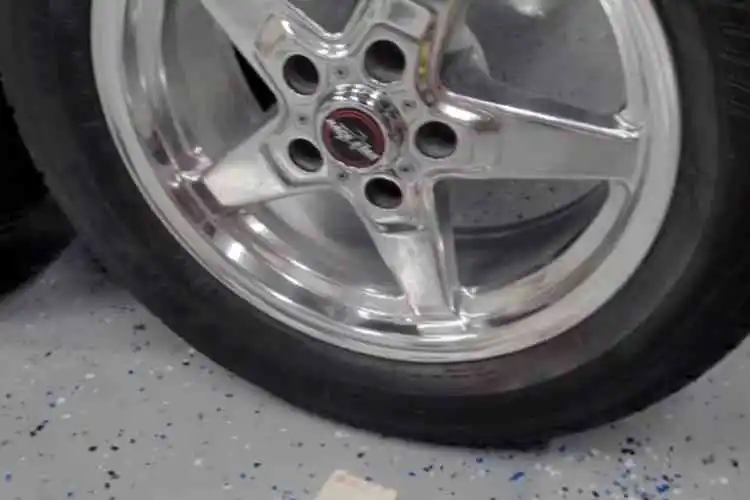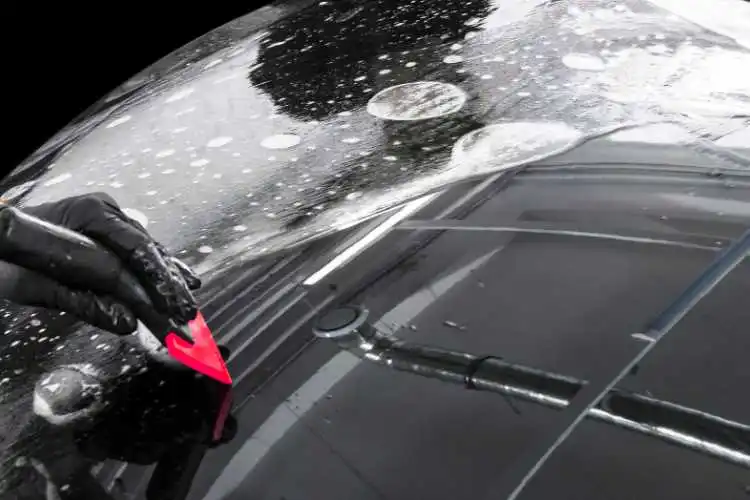Toyota Super White Paint Problem: What You Need to Know
If you own a Toyota with Super White paint, you may have noticed some issues with the finish. Some owners have reported that the paint on their cars is peeling or chipping, leaving unsightly blemishes on an otherwise beautiful vehicle. If you’re one of these owners, don’t worry – you’re not alone.
The allure of a shiny, perfectly painted vehicle is a sight to behold. However, for many Toyota vehicle owners, this vision turned into a nightmare as peeling paint plagued their beloved cars, particularly those adorned with the Super White (paint code 040) color.
What was meant to be a mark of elegance and sophistication turned into a glaring issue of frustration and financial burden, especially for Toyota Tacoma owners who bore the brunt of this paint defect.

What Causes the Super White Paint Problem?
The Super White paint problem is caused by a defect in the paint itself. Toyota has acknowledged that there is an issue with the paint on some of their vehicles, specifically those with the Super White color. The problem seems to be most prevalent in Toyota models manufactured between 2008 and 2018.
What Can You Do About It?
If you’re experiencing issues with the paint on your Toyota, there are a few things you can do. First, contact your local Toyota dealership. They may be able to offer you a solution, such as repainting the affected areas or offering a discount on a new paint job.
Another option is to file a complaint with the National Highway Traffic Safety Administration (NHTSA). The NHTSA is responsible for investigating safety defects in vehicles, and they may be able to help you get a resolution to your paint problem.
Finally, you can take matters into your own hands and try to fix the problem yourself. However, we don’t recommend this option unless you have experience with auto body repair. Attempting to fix the paint on your own could lead to further damage to your vehicle.
Vulnerable Toyota Models and Scope of the Problem
The scope of the Super White paint problem was extensive, affecting a range of Toyota models.
From the Camry to the RAV4, and even the iconic Prius, reports of peeling paint emerged from a variety of Toyota owners dating back to as early as 2008.
This distressing trend not only reflected a grave aesthetic concern but also hinted at a more systematic issue rooted within Toyota’s manufacturing processes.
Toyota’s Response and Actions Taken
In the face of mounting evidence and discontent among its customer base, Toyota’s initial response to the Super White paint problem was lukewarm at best.
For years, affected owners found themselves frustrated by the lack of substantial action from the company.
However, the tide began to turn when Toyota finally acknowledged the issue as a “manufacturing defect” caused primarily by prolonged exposure to sunlight.
Yet, even this acknowledgment was not immediately accompanied by a comprehensive solution.
Toyota introduced a “warranty enhancement program” aimed at addressing the paint problem, but this program was notably exclusionary.
While it covered other models and various paint colors, it fell short of providing relief to Toyota Tacoma owners, leaving them to shoulder the burden of repairs themselves.
Manufacturing Defect: Unpacking the Issue
A manufacturing defect is a term that sends shivers down the spine of automotive companies.
It indicates a failure in the production process that renders the end product subpar or faulty.
In the context of the Super White paint problem, the evidence of peeling paint on a significant scale points to a lapse in Toyota’s manufacturing standards.
Toyota’s own acknowledgment of the issue as a manufacturing defect reinforces this viewpoint.
It underscores the gravity of the situation and highlights the need for rectification, not just for the sake of the affected customers but also to safeguard the reputation and trustworthiness of the brand.
Status of Latest Toyota Models
As the paint problem stirred uproar among Toyota owners, it was imperative for the company to address this issue in its latest models.
Reports and investigations reveal that the problem persisted in some of the latest Toyota vehicles as well.
This raises concerns about the company’s efforts to implement effective solutions and improvements in its manufacturing processes.
While some incremental changes might have been made to mitigate the paint problem in newer models, the onus lies on Toyota to ensure that these changes are substantial and genuinely effective in preventing further instances of peeling paint.
Warranty Coverage and Consumer Options
To its credit, Toyota did introduce a warranty enhancement program to alleviate the concerns of affected customers.
However, this program, while a step in the right direction, left Toyota Tacoma owners in a state of disappointment due to their exclusion from the program.
This exclusion not only perpetuated their financial burden but also cast a shadow of doubt on Toyota’s commitment to its customers.
For those fortunate enough to be included in the warranty enhancement program, the potential coverage of repair costs provided a glimmer of hope.
It offered a respite from the heavy expenses associated with rectifying the paint problem, albeit within a limited scope.
Prospects of a Recall and Consumer Expectations
The looming question in the minds of many Toyota owners is whether a recall will be issued to address the Super White paint problem comprehensively.
Toyota’s responses and actions thus far have provided mixed signals. While the acknowledgment of a manufacturing defect is a step toward a potential recall.
The fact that the warranty enhancement program excludes certain models, particularly the Toyota Tacoma, raises doubts about the company’s willingness to take full responsibility.
To rebuild consumer trust and uphold its reputation, Toyota must consider the expectations of its customers and the broader automotive community.
A recall, if executed transparently and effectively, could be the turning point that restores faith in the brand.
Causes of Peeling Car Paint
The causes of peeling car paint are multi-faceted, often involving a combination of environmental factors, poor paint quality, and manufacturing defects.
In the case of the Super White paint issue, prolonged exposure to sunlight, a known trigger for paint deterioration, played a significant role.
Poor paint quality or oversight in manufacturing processes could also be contributing factors, resulting in an unfortunate confluence of circumstances that led to the widespread problem.
Considering Alternatives: Other Toyota Paint Colors
As consumers weigh their options when purchasing a Toyota vehicle, it’s worth considering alternative paint colors to avoid falling victim to the Super White paint problem.
Toyota offers a range of paint colors, each with its own durability and potential issues.
By opting for a color that has shown better resistance to peeling, buyers can potentially spare themselves the ordeal that many Super White owners have faced.
How to Prevent the Super White Paint Problem?
If you’re in the market for a new Toyota and you’re concerned about the Super White paint problem, there are a few things you can do to prevent it from happening to your vehicle.
First, consider choosing a different color. While Super White is a popular choice, there are plenty of other colors available that may be less prone to the paint problem.
Another option is to invest in a paint protection film. These products can help protect your vehicle’s paint from damage, including the Super White paint problem.
Conclusion
The Super White paint problem has underscored the importance of transparency, accountability, and fair treatment of customers in the automotive industry.
Toyota’s journey towards resolving this issue has been marked by frustration and hope, disappointment and expectations.
The company must take more proactive measures to address the issue comprehensively, not only to regain consumer trust but also to reinforce its commitment to quality and customer satisfaction.
In doing so, Toyota can pave the way for a brighter road ahead, where its vehicles truly shine without the stain of peeling paint tarnishing their allure.


